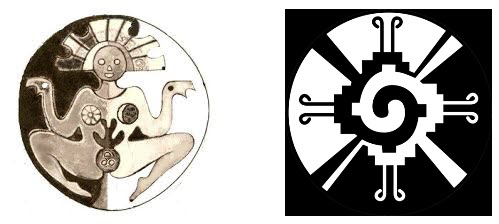Cosmology
Donec sollicitudin molestie malesuada. Lorem ipsum dolor sit amet, consectetur adipiscing elit. Praesent sapien massa, convallis a pellentesque nec, egestas non nisi SubscribeLive StreamCosmology
Although the postulates and basic foundations of Tao are as old as humanity itself and its history dates back to time immemorial, what is known of Taoism is attributed to Lao Tse, one of the most important philosophers of Chinese civilization, and for that reason it was believed that Taoist cosmology was exclusively from the East; But reviewing the archaeological records, the rites and the cosmovision of pre-Hispanic cultures, we find that they had a clear notion of duality, complementarity and alternation, among other great knowledge.
An example of this is the Aya Uma, the Pacha Mama, the Hunab Ku diagram, etc.
The pre-Hispanic peoples in their philosophy and development were based on the same pattern of Taoism of China and it is not that it is intended to westernize the Taoism of the East; it is that the Tao as a principle covers from the East to its most extreme cardinal in another cultural and geographically different area and that makes that simultaneously derive certain needs that rituals, practices and liturgies must meet to preserve the unity of the Tao itself.
Legend has it that Lao Tse worked for a time as an advisor to the emperor in the state of Chu, now Lùyì district, in the province of Henan. Before embarking on a long journey on buffalo back to western China, and very close to the border, he met Yin-hi, an official and governor of the Han-ku pass, and in his house he wrote his masterly teaching in an overwhelming poem of aphorisms with five thousand characters that make up the great manifesto entitled the Tao te King, one of the most valuable classics of Chinese culture: Tao means “way”, Te means “power” and King means “book”, literally said, but generally translated as The Classical Book of the Way and its Power or simply the “Tao te King” from which Taoist cosmology, philosophy and religion emanate.
The drawing of the Pacha Mama and the diagram of Hunab ku, the “only living and true God” among the gods of the ancient Yucatan, demonstrate, as we said before, that in the East and West they had the same way of conceiving God; that the Taoist cosmology is the same that the cultures of pre-Hispanic Mesoamerica had, which flourished in the Andean zone of the subcontinent between the XV and XVI centuries, as a consequence of the apogee of the Inca civilization at the time of Tawantinsuyo, Tahuantinsuyo or tao-antinsuyo, that South American state with the most extensive domain in the history of Etashtitlán, that is, of pre-Columbian America.
From the Quechua tawantin suyu, which means “the four regions or four divisions”, like “the four elements of nature” of which Lao Tse spoke so much.
The tao-antinsuyo declined when the Spanish conquest began by the institution of the Inquisition, which identified the pretensions of papal Rome to legitimize its religious, economic and geopolitical interests, imposing by force the Platonic duality.




